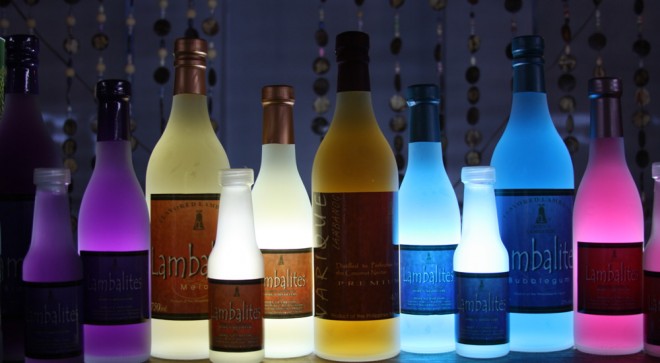Laguna stores run out of ‘lambanog’ due to cold spell
SAN PEDRO CITY, Philippines—The supply of “lambanog” at stores in Liliw, one of the upland towns in Laguna province, is drying up as residents turn to taking a swig of the coconut-based wine to cope with the cold spell, said farmer Salvador Hernandez.
During the cold months, the coconut bud does not produce much sap, which is distilled into wine, resulting in a short supply of lambanog, said Hernandez, 50.
Lambanog sells for P200 a gallon in Liliw.
“I used to just wear sando (sleeveless shirt) but this time we have to wear jackets. Some people here also started wearing bonnets. It feels like we’re in Baguio,” he said.
Other residents in Calabarzon (Cavite, Laguna, Batangas, Rizal, Quezon) are having a feel of “Baguio chill,” although weather observers maintain this is normal during this time of year.
Article continues after this advertisementIn Tagaytay City, Cavite province, temperature dropped to 18 degrees Celsius on Friday, the lowest over the past seven years, according to Clyde Yayong of the city disaster risk reduction and management council.
Article continues after this advertisementHeated water for bath
“Taking a bath in the morning has become a struggle. I have to boil water for my bath and wear a jacket and bonnet whenever I step out of the house,” Yayong said.
In Los Baños town, where the agrometeorological station of the Philippine Atmospheric, Geophysical and Astronomical Services Administration (Pagasa) in Laguna is located, the mercury plunged to 18.2 degrees on Monday morning.
The station’s chief meteorologist, Bernadeth Lucillo, said it was one of the “coldest” temperatures recorded, although the lowest was 15.6 degrees in January 1971.
In Tagaytay City, the “normal” temperature throughout the year averages 22 to 27 degrees but drops in January to February, according to tourism officer Lani Diesta.
Since the start of the year, the temperatures, she said, were between 19 and 20 degrees.
The extra cool breeze draws more day tourists to Tagaytay’s theme and leisure parks. Since last December, the city has recorded 40,000 tourist arrivals during weekends and 5,000 to 10,000 during weekdays.
Pepe Alas of San Pedro City took the opportunity to experience the cold breeze with his family on a weekend tour last week.
“We’ve been [to Tagaytay] several times but [this] was the coldest we’ve experienced,” Alas said.
He noted how a steaming bowl of bulalo (bone marrow soup), a popular dish in Tagaytay, quickly turned cold and greasy.
“People usually prefer to visit amusement parks at night, but since the weather here is cool, they can tour around even during the day and not feel the heat at noon,”Diesta said.
But unlike northern Luzon provinces where the frost began to damage vegetables, Diesta said there were no reports of damage to Tagaytay’s crops, such as banana, pineapple and papaya “since [the temperature drop] is tempered.”
Marlon Tobias of the Laguna provincial agriculture office said the crops could survive the cold.
The temperature in Sta. Cruz town, the capital of Laguna, used to be between 22 and 23 degrees, but “slightly dropped”this year to 21 degrees over the past weeks, he said on Monday.
In Mt. Makiling in Laguna, foresters experience “an unusually cold weather,”said Dr. Nathaniel Bantayan, director of Makiling Center for Mountain Ecosystems.
The temperature in Makiling over the past weeks was 20 degrees, although this, he said, was not a cause for alarm for mountain hikers.
Pets
In Lipa City, Batangas province, where Donna Orilla and a partner run an animal clinic, she said they were enjoying the chilly nights, but noticed that several pet owners complained about their animals catching colds and other respiratory problems.
Several households in Laguna and Batangas have been turning off air conditioners or electric fans, thankful for having reduced electric consumption.
The Calabarzon disaster risk manager chief, Vicente Tomazar, said he expected the cold temperature to last until February. “It’s normal and people have nothing to worry about. We should be feeling ‘Tagaytay’ all over Calabarzon,” he said.
Lucillo of Pagasa advised people to take measures to adapt to the cold temperature by wearing thick apparel or taking warm drinks to heat up their bodies.
“The wind is cold and dry, so people might also want to use some face cream or lip balm so it won’t hurt when the wind touches the skin,” she said.
In Baguio, the weather bureau said residents in the mountain resort city should not expect warmer days in the next few weeks as temperature readings here continue to drop.
On Monday morning, the mercury was 8.4 degrees, up from the 8.1 degrees on Sunday morning. Monday’s temperature was the second-lowest reading this year and the third-lowest since January 2009 when the city experienced 7.5 degrees.
Until Panagbenga
Leticia Dispo, weather specialist of the Pagasa station in Baguio, said residents should prepare for colder days until February when the summer capital celebrates the annual Panagbenga (Baguio Flower Festival).
The temperature reading rose to 12.4 degrees at about 2 p.m. on Monday.
Dispo said the temperature reading was lower at Mt. Sto. Tomas in Tuba town in Benguet province, dropping to 5.6 degrees Celsius early Monday.
Mt. Sto. Tomas, at 2,260 meters (7,415 feet) above sea level, offers a panoramic view of Baguio City and the Lingayen Gulf.
Dispo said temperature readings in Mt. Sto. Tomas in the past few days ranged from 7 to 9 degrees.—With a report from Gobleth Moulic, Inquirer N. Luzon
RELATED STORIES
Baguio stays cool at 8.4 degrees; Pagasa sees colder days until February
